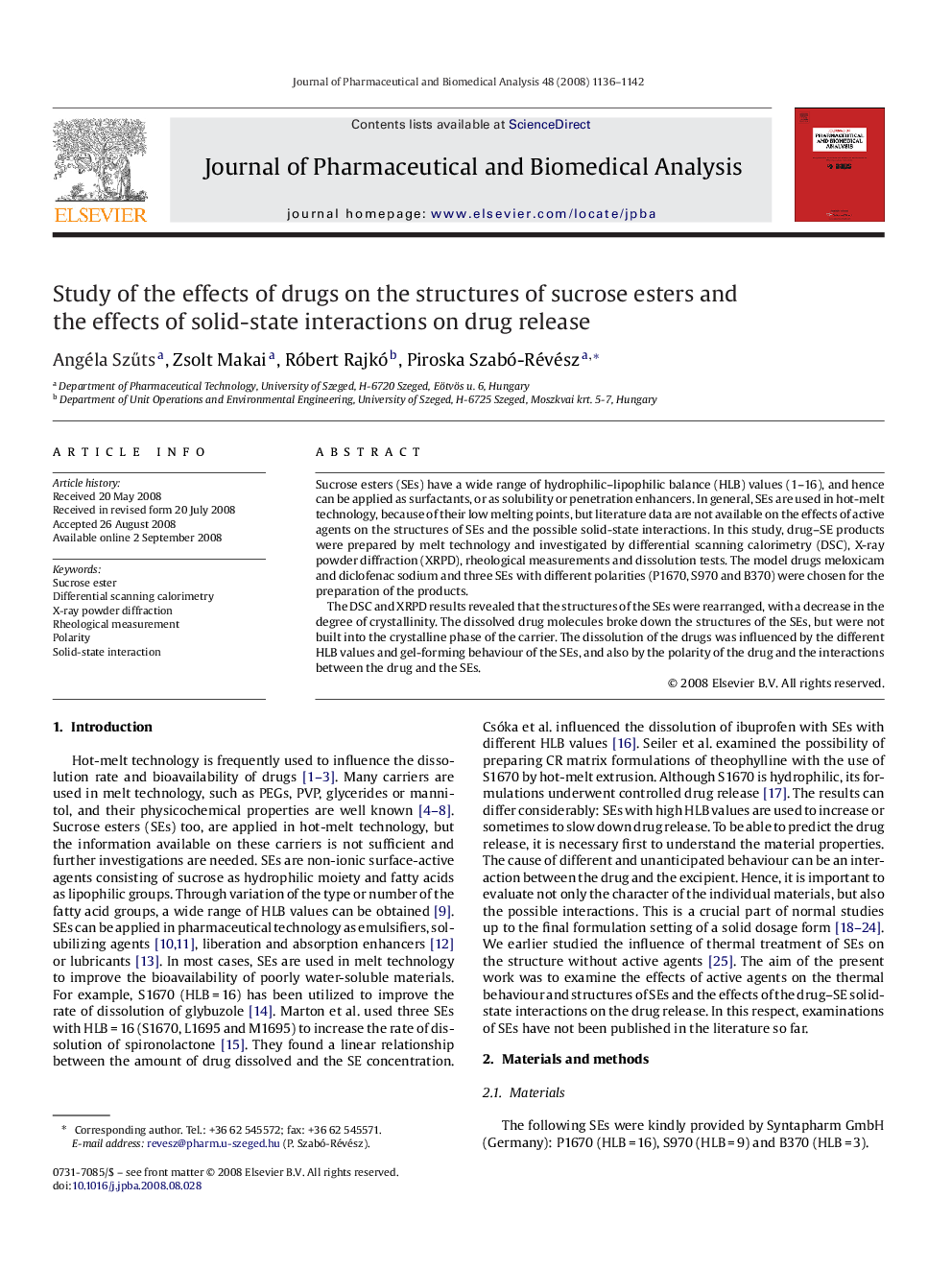| Article ID | Journal | Published Year | Pages | File Type |
|---|---|---|---|---|
| 1222522 | Journal of Pharmaceutical and Biomedical Analysis | 2008 | 7 Pages |
Sucrose esters (SEs) have a wide range of hydrophilic–lipophilic balance (HLB) values (1–16), and hence can be applied as surfactants, or as solubility or penetration enhancers. In general, SEs are used in hot-melt technology, because of their low melting points, but literature data are not available on the effects of active agents on the structures of SEs and the possible solid-state interactions. In this study, drug–SE products were prepared by melt technology and investigated by differential scanning calorimetry (DSC), X-ray powder diffraction (XRPD), rheological measurements and dissolution tests. The model drugs meloxicam and diclofenac sodium and three SEs with different polarities (P1670, S970 and B370) were chosen for the preparation of the products.The DSC and XRPD results revealed that the structures of the SEs were rearranged, with a decrease in the degree of crystallinity. The dissolved drug molecules broke down the structures of the SEs, but were not built into the crystalline phase of the carrier. The dissolution of the drugs was influenced by the different HLB values and gel-forming behaviour of the SEs, and also by the polarity of the drug and the interactions between the drug and the SEs.
